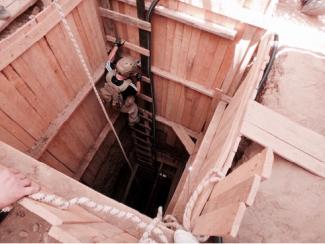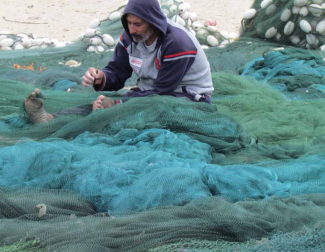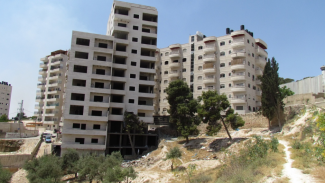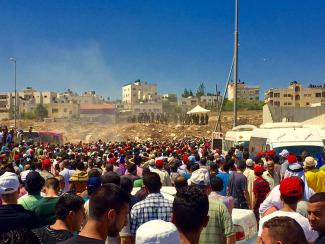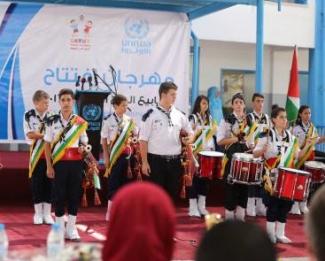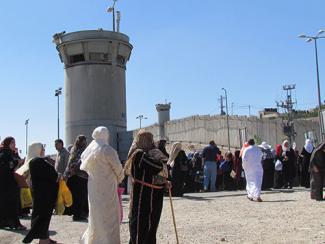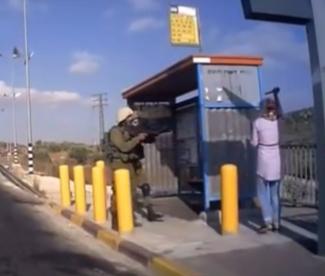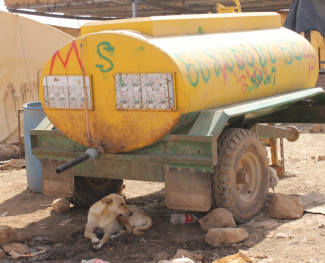In Gaza, Explosive Remnants of War (ERW) and other explosive hazards resulting from the 2014 and previous hostilities continue to pose a serious threat to the life and physical integrity of the population. The extent of contamination by ERW in Gaza is unknown. Although a large number of ERW was cleared shortly after the 2014 conflict by both official and unofficial bodies, suspected ERW remain hidden throughout Gaza, either among the rubble of destroyed structures or buried below the surface. Since the end of hostilities in August 2014, 17 people have been killed and 100 more have been injured by ERW, including 46 children.
The Monthly Humanitarian Bulletin | July 2016
Suspected ERW in Gaza has killed and injured more than 100 since the end of the 2014 hostilities. Planned easing of access restrictions for Palestinians in Ramadan partially frozen after fatal Tel Aviv attack. New project will target vulnerable communities in Area C with water consumption of less than 30 litres per capita per day. East Jerusalem Palestinian localities behind the Barrier lack adequate infrastructure, facilities and services.
In this document
After less than three months during which the Israeli authorities expanded the fishing zone along the southern Gaza coast from six to nine nautical miles (NM), the six NM limit was re-imposed on 27 June. The brief expansion on 3 April 2016 was less than the 20 NM agreed to as part of the Oslo Accords, but the Fisherman’s Syndicate estimated that it had led to an increase of 25 per cent in the quantity and diversity of the fishing catch.
The Barrier physically separates some East Jerusalem Palestinian localities from the urban centre, despite these areas remaining inside the Israeli-declared municipal boundary and residents retaining their permanent resident status in the city. Palestinians living in these areas now need to cross checkpoints to reach workplaces and the health, education and other services to which they are entitled as residents of Jerusalem.
Since 2008, the Israeli authorities have introduced aged-based criteria during the month of Ramadan that allow Palestinians holding West Bank ID cards to access Al Aqsa Mosque in East Jerusalem for Friday prayers in lieu of the normal permit requirements. The criteria differ slightly every year but in 2013, 2015 and 2016 all Palestinian women, irrespective of age, were allowed to enter East Jerusalem for Friday prayers. In 2016, access for men was limited to males under 12 and above 45 years of age.
UNRWA’s Summer Fun Weeks (SFW) are taking place between 23 July and 11 August in over 120 different locations across the Gaza Strip, including installations that facilitate the participation of children with special needs. The SFW include sports activities such as football, basketball, and popular games like trampolines, slides or sack races. Other activities such as handicrafts and drawing will also be offered. Around 140,000 students have already registered.
The majority of Palestinian communities in Area C of the West Bank face difficulties in accessing water, with an estimated 180 residential areas not connected to any water network and depending on expensive tankered water to meet their needs. Localities served by the network are also vulnerable to water scarcity, particularly in the summer, a situation exacerbated by a decision in June by the Israeli water company Mekorot to reduce the amount of water pumped to over 150,000 Palestinians in the northern West Bank. This month’s Bulletin profiles a UNICEF-coordinated project to supply subsidized water to 20,000 people in 79 Area C communities, which have an average water consumption of less than 30 litres per capita per day (l/c/d), far below the international standard of 100 l/c/d. The limited access to water is one element of the coercive environment in Area C that increases the risk of forcible transfer.
The last quarter of 2015 was marked by a sharp rise in stabbing, ramming and shooting attacks by unaffiliated Palestinians against Israelis, as well as almost daily protests and related clashes. As a consequence, the number of casualties among West Bank Palestinians (145 fatalities and over 14,000 injuries) in 2015 was the highest since 2005, when OCHA began documenting incidents. Israeli casualties in the West Bank and Israel were also the highest since 2005 (25 fatalities and 300 injuries). The frequency and intensity of protests and clashes declined sharply during the first half of 2016 alongside a more moderate fall in Palestinian attacks.
The majority of Palestinian communities across Area C of the West Bank face serious water access problems. According to the Vulnerability Profile Project (VPP) - a comprehensive survey of all Area C communities coordinated by OCHA in 2013 - 180 residential areas are not connected to the water network and another 122 have a connection with no or an irregular supply.[1] This situation is directly linked to the restrictive discriminatory planning and zoning regime applied by the Israeli authorities in Area C.[2]
